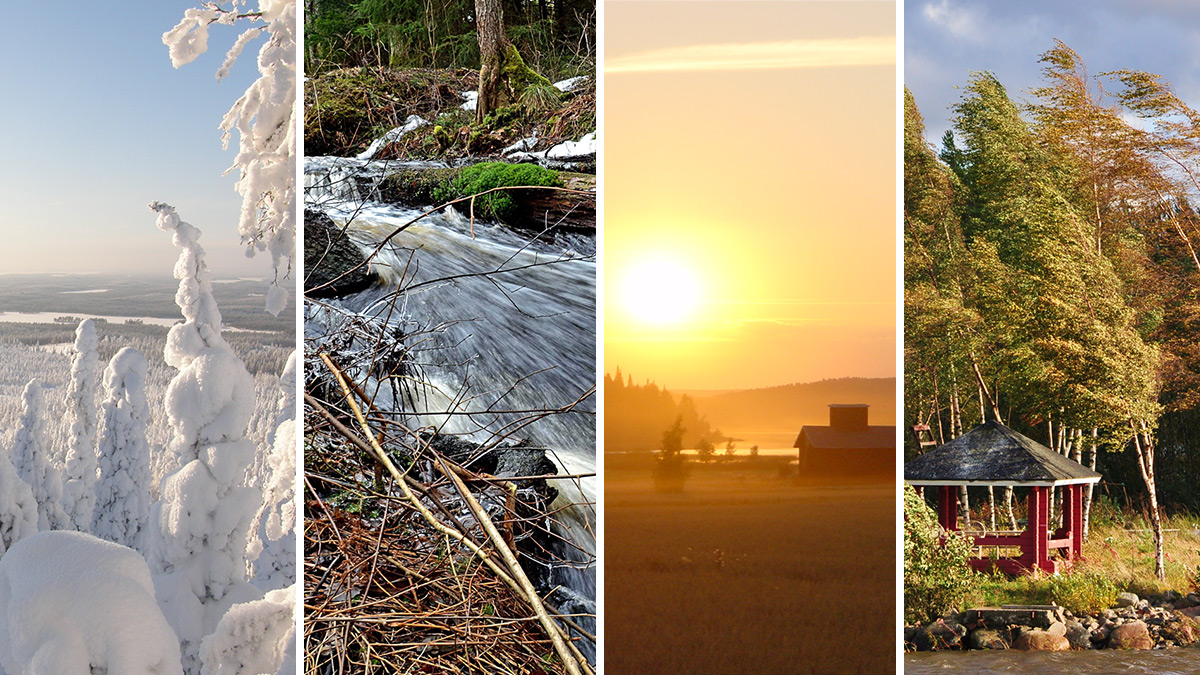Normal average temperature in 2021 ‒ summer was warm

According to statistics from the Finnish Meteorological Institute, the average temperature in 2021 was quite normal. The average temperature for the whole country was +2.8 degrees, which is just one tenth below the long-term average for 1991‒2020. The previous time that Finland had a cooler year was in 2012, when the average temperature was +2.1 degrees.
The most significant deviation in temperature was recorded in June, when the average temperatures for the month rose to the highest levels in the history of record-keeping in southern and central areas of the country, and in parts of the north. July was also significantly warmer than average. February, September, and December were nevertheless significantly colder than usual.
The highest temperature in 2021, 34.0 degrees, was measured on 15 July at the Asemantaus observation station in Heinola. The record low for the year was recorded on 20 February when the temperature dropped to -39.7 degrees at Kevojärvi in Utsjoki.
Great regional variation in precipitation
In most of the country, annual precipitation was close to normal or slightly above. However, in central and northern parts of the country, precipitation was unusually heavy, at levels which occur less than once in ten years on average. However, in parts of the southwest of the country and in northernmost Finnish Lapland, precipitation was below the long-term averages. In Kevo, in Utsjoki, precipitation was unusually low last year.
According to preliminary data, the location with the greatest amount of precipitation last year Paljakka in Puolanka, which got 881.8 millimetres. Total precipitation in 2021was lowest in Kevo, in Utsjoki, 323.3 millimetres. The greatest amount of precipitation recorded in a single day was 73.5 millimetres in Kotila in Puolanka on 19 June.
The maximum depth of snow, 106 centimetres, was measured in Paljakka in Puolanka on 10 April.
December was colder than usual
December 2021 was colder than normal in all parts of the country. In a few coastal stations the month was unusually cold, with temperatures reached once every 10 years or less. Average temperatures varied between near zero in the southwest archipelago to about -15 degrees in Utsjoki. The average temperature for the month was 2‒6 degrees below the long-term average.
The lowest temperatures for December occurred early in the month, falling to about -30 degrees in many parts of Finnish Lapland. The lowest temperature for December, -35.2 degrees, was measured on Independence Day, 6 December, in the village of Muonio. In mid-December, the chill eased, and daytime temperatures rose briefly to above freezing all the way up to southern parts of Finnish Lapland. The highest temperature for the month, +11.0 degrees, was measured on 18 December at Mariehamn Airport. This was near the record-high temperature for December (+11.3 degrees), which was set in Pori and Kokemäki on 20 December 2015.
Low precipitation in December
Precipitation was lower than usual in nearly all parts of Finland. In western and central areas, and in North Ostrobothnia, total precipitation was unusually low in many locations, and exceptionally low in some places. The greatest amount of precipitation for the month, 66.1 millimetres, was recorded in Kirakkajärvi in Inari. Precipitation was lowest, 6.8 millimetres, in Laitala in Toholampi. The greatest amount of precipitation in a single day, 24.9 millimetres, was measured at Klemettilä in Vaasa on Christmas Eve, 24 December.
In most of the country there was snow on the ground all month. Only in the south and southwest were there snow-free areas in early December. At the end of the month, the depth of the snow in the south and southwest of Finland was mostly 7–17 centimetres, and 20–50 centimetres in much of the rest of the country. At the end of the month snow depth was 5–15 centimetres greater than usual in central areas, North Ostrobothnia, and parts of Central Lapland. In other areas snow depth was near normal levels. The greatest amount of snow at the end of the month was in Kirakkajärvi in Inari (71 centimetres).
Further information:
Weather statistics from the Climate Service tel. +358 (0)600 1 0601 (€ 4,01/min + local network fee)
Meteorologists speak about an exceptional weather phenomenon when it occurs on average once every 30 years or less frequently. A phenomenon is called rare when it happens less frequently than once every ten years.
